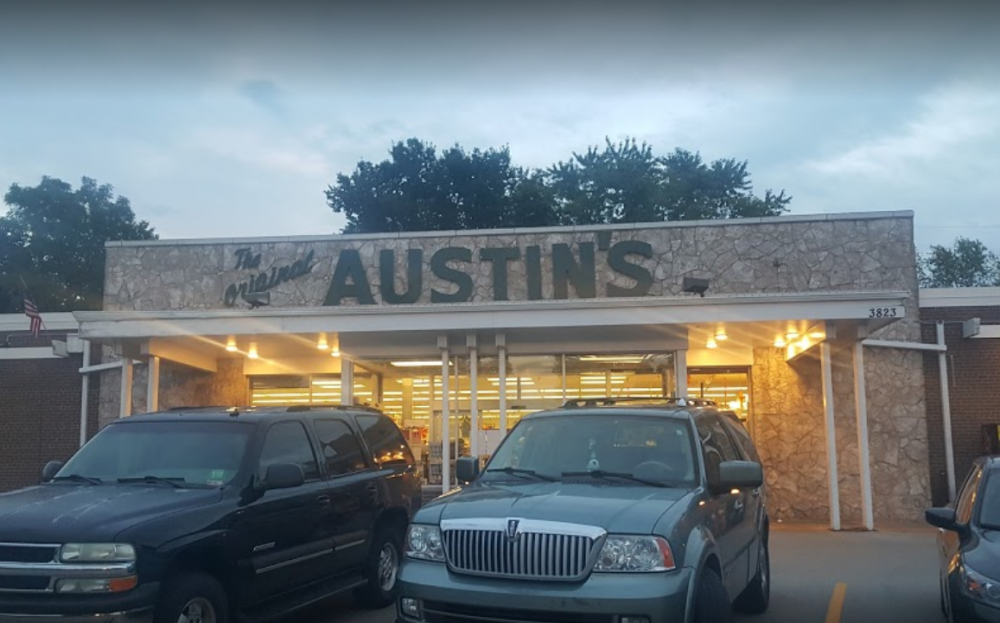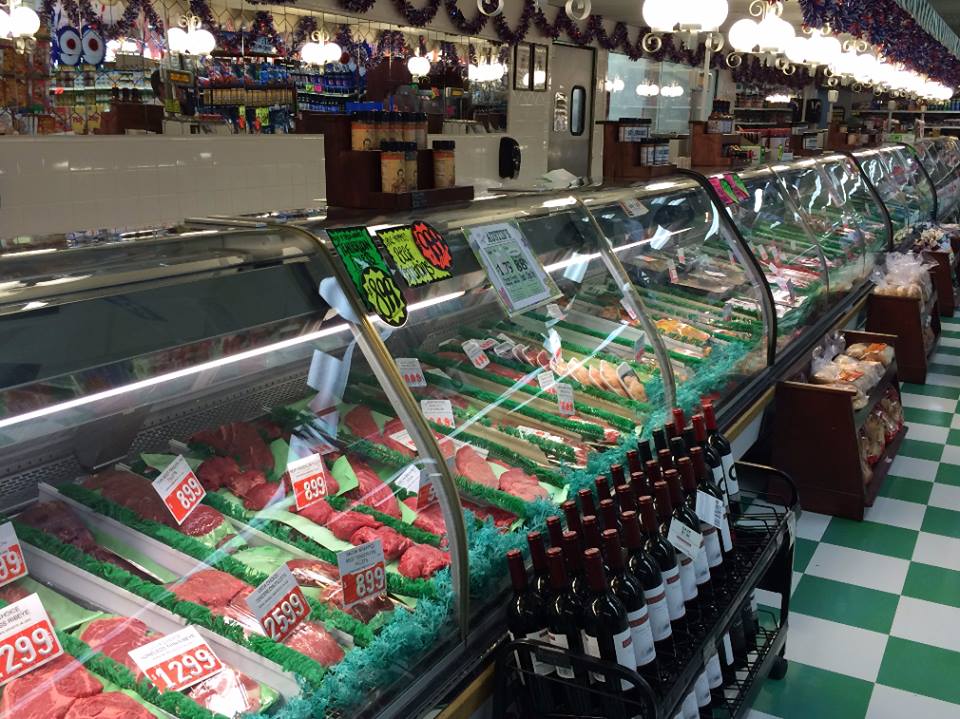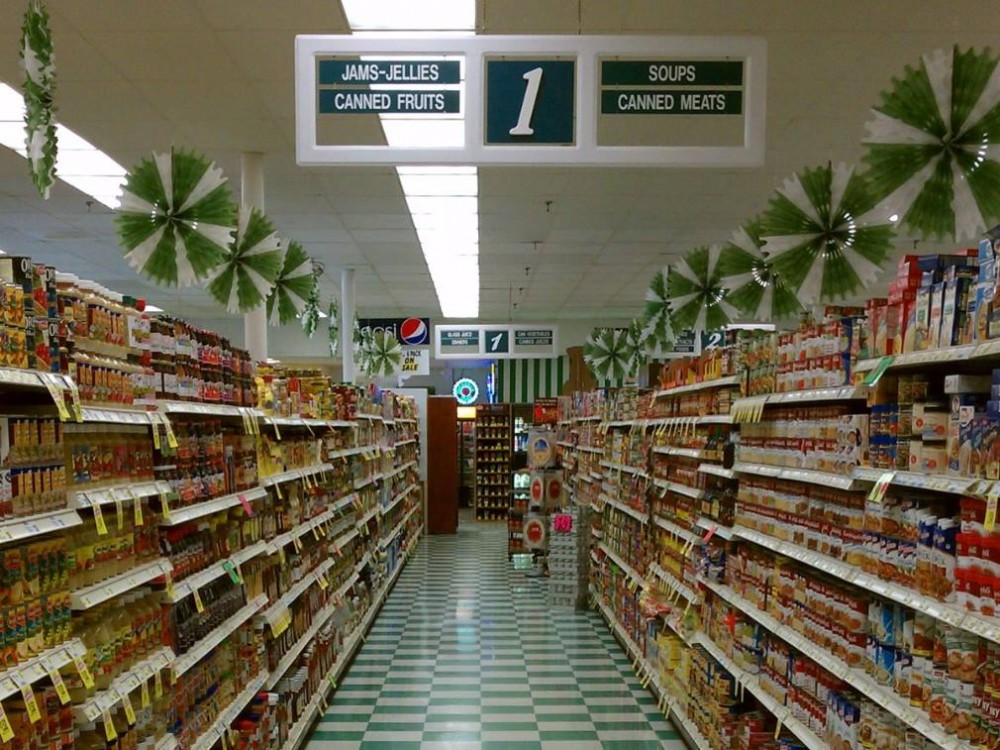A Local Alternative: The Original Austin’s vs. Walmart
Nowadays, if you close your eyes and throw a stone in any particular direction, you’re practically guaranteed to hit a Walmart. After all, chain supermarkets are everywhere. Green Bay, for example, has a Woodman’s, two Walmarts, three Pick ‘n Saves and four Festival Foods, which all compete to meet the needs of more than 100,000 people. Convenient, low-priced and full of options, the modern supermarket’s ubiquity is not surprising. But due to this, their smaller local counterparts have seen a decline over the past few decades. What happened to these now-elusive independent grocers?
Walmart (along with other chain retailers) happened.
In 2009, Loyola University studied 306 businesses after a Walmart location in Chicago opened nearby. Between 2006 and 2008, 82 went out of business. These findings proved that a single major supermarket may spell disaster for nearby competitors unprepared for the competition. Green Bay has 10.
“I could name a dozen big stores that have opened since 1984 here,” says Rick Austin, co-owner of one of the few local grocery stores remaining in Green Bay, The Original Austin’s. “Whether it’s a grocery store or a shoe store, everything just got bigger and bigger, and that kind of rubbed out a lot of the family-type places.”
Austin’s, which opened in 1953, is a local family business in its second generation of ownership by Austin and his two brothers, Bob and Steve. Bordering De Pere, its current South Webster Avenue location is convenient for close-by neighborhoods of both locations. Inside, the store has many, if not all, of the selections one would imagine at a standard supermarket: meat, fresh produce, canned and dried goods, refrigerated dairy, drinks and more.
But offering enough products to make shopping as one-stop as possible may not be enough for local businesses to compete, for larger retailers will still often offer an even wider variety of supplies at a lower price point. That’s why Austin says local businesses “have to do at least one thing better than most.”
“You can’t just be average, or otherwise you’re just average. And that’s always been the cornerstone of our business forever,” Austin says.
In their case, the most visible selling point is Austin’s 62-foot fresh meat display, rivaling even its big-box competitors. While Austin says most bigger stores wrap at least some of their meats, their meat section is all fresh, full service and one of the largest in the state.
“We’ve always had the meat display since the day my dad started the business,” Austin says.
Another feature is the store’s small size, which he says is a benefit: selections may be fewer, but easier navigation makes for its own variety of convenience.
“You’re in a store that’s 80,000–100,000 square feet, and you’ve got to find 20, 30 things,” Austin says. “Where do you even start? In the case of this store, you can be in and out in 20 minutes.”
More often than not, a key difference between a large store and a smaller one like Austin’s is how employees interact with their customers.
“If they don’t [know where something is], someone will be around to show them where it is versus a big store. It’s so big, you might see one employee every 15 minutes,” Austin says. “You just kind of expect [they’re] not going to notice you so much.”
The smaller, local stature means local businesses like Austin’s can communicate with the community in a way that chain retailers cannot, listening to their customers’ specific needs on an individual level.
“We have a lot of stuff that most people need, and if we don’t, I’ll get it if I can,” Austin says. “Generally, if people ask for something, generally that means other people are looking for it, so that’s kind of nice.”
Austin’s also does the best it can to support other community organizations, donating to local high schools, churches and Green Bay’s cerebral palsy center.
“We recognize that we are part of the community. A lot of people probably don’t know we [lend support], but that doesn’t mean we shouldn’t,” Austin says.
But Austin says that most of all, for the business’ success he has his employees to thank, many of whom have decades of retail experience specifically through working at Austin’s.
“My bookkeeper’s been with us 31 years. My assistant manager’s been here 33 years. We’ve hired kids, they’ve grown up, and we’re hiring their kids,” Austin says.
Large retailers have different philosophies, often paying more but demanding greater efficiency due to larger locations, which may result in more employees leaving. Austin says this employee model is not necessarily bad, just different, but even so, he also says that employees that leave Austin’s tend to return despite the pay difference.
“We have four meat cutters. Two of them left us to go to somewhere else, and they came back. Would you rather go there and make a little more money or stay here and enjoy your job?” Austin says.
Austin says that, ultimately, he values the support of both his workers and the community, and his business model reflects that.
“We just appreciate a lot that they still shop here, and … we really want our crew to work here as long as they want to work here. We don’t want to just say goodbye,” Austin says. “They’ve always been so loyal.”













Leave a Comment